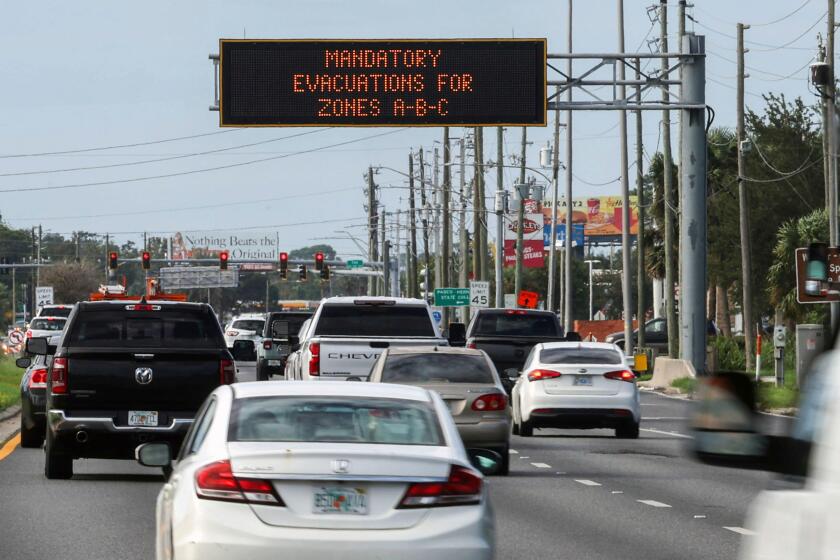
The range of insured-loss potential from Hurricane Milton is huge, but many of the early scenarios being discussed suggest that, like Hurricane Ian, this could once again be a retro/collateralised reinsurance loss while cat bonds remain more intact.
With that said, if the upper-end scenarios for Milton come to pass, the event could be more of a test for the cat bond market than it has ever faced before, despite the general elevation of attachment points since 2022.
The loss will also be a test of ILS hedging strategies and changing market exposures, as what was once a broader overall Florida exposure has become more nuanced, with ILS managers seeking to differentiate themselves over the post-Hurricane Irma years.
It will once again mean trapped capital being a problem in the run-up to the 2025 renewals, even with more moderate loss scenarios.
That said, this time, it is understood that solutions for trapital release – which would echo similar trapped-capital release deals in recent years – could form part of the post-Helene/Milton landscape in the run-up to 1 January.
As previously explored, most sources pointed to the expectation of a $50bn+ event ahead of landfall. The most extreme scenarios involving a Category 4 or above hit to Tampa, with a path that takes the storm over Orlando, would extract a loss toll of more than $100bn.
If the storm loses intensity due to wind shear just before coming ashore and tracks further south towards Sarasota and away from the biggest concentration of value in Tampa Bay, then a $20bn-$30bn scenario is still in play.
On Wednesday morning UK time, the storm had taken a more favourable shift south of Tampa Bay, remaining clear of Orlando inland.
At the lower-end $30bn-$40bn range, Milton would begin to tag high-rate retro covers and start to incur losses for Florida domestic reinsurance above the Cat Fund.
Above $50bn-$60bn of losses will be where private ILS strategies may start to near break-even/loss territory, one advisor suggested.
It would take until the $60bn-$80bn point for cat bonds to start being impacted, but even this would be a manageable earnings-level impact given the “cushion” from year-to-date returns. One suggested cat bond losses would be more broadly felt only at or above $100bn.
The ILS Advisers index had reached 7.6% gains by the end of August, with roughly parallel returns from both cat bond and private ILS segments.
Cat bonds on watch
On Friday, the market will see how far cat bond prices are initially impacted as a result of Milton.
Aggregate ILW cat bonds feature among some of the higher-attaching deals on the liquid side of the market. However, aggregate deductibles have become stricter in recent years, so it remains to be seen how much earlier, or subsequent, loss events interact with Milton to impact write-downs here.
Florida domestics have around $5.4bn on risk, or around 12% of the $46bn cat bond market, according to data from Insurance Insider ILS. These will all clearly be on watch, especially towards the $50bn-$60bn and above range, but Floridians have a lower share of the market than in past years, one ILS source noted.
The Florida domestics are, of course, not the only source of Florida wind exposure for the cat bond market. Retro and nationwide reinsurance deals will all be exposed to this peak peril to a degree.
Ian, at around $50bn, provides a recent indicator of potential cat bond market impacts. According to Lane Financial, the initial $1.8bn of loss markdowns to cat bonds post-Ian narrowed to around $440mn of expected losses after revisions were made by the end of 2023.
There will be variations from Ian, of course. Milton poses a much greater storm-surge risk, which will influence the FloodSmart bond risk, for one.
Florida risks
Another hotspot of ILS exposure will be the Citizens reinsurance programme, which includes chunky lines from the likes of Nephila, DE Shaw and Aeolus.
Citizens does tend to buy higher-attaching cover spread over larger layers than private peers with less capital resource, but even so, its exposures at risk are substantial.
Outside Miami and the Southeast region, the carrier is most exposed in Pinellas County, at around $53bn, which represents the worst-case landfall scenario for the industry.
However, on the southern side of Tampa Bay, the exposures at risk are lower, such as Manatee County, which is closer to $9bn, or Sarasota County, at around $18bn.
Citizens also has $24bn of exposure on the eastern coast in Brevard County, where Milton is forecast to pass through at hurricane strength on its way over the peninsula.
Citizens’ reinsurers provide $3.6bn of limit to the firm across a traditional reinsurance program of just under $2bn and $1.6bn in cat bonds. A small $630mn sum triggers at lower-level losses in line with the Cat Fund, but the bulk sits above the Cat Fund coverage – triggering above ~$30bn of industry losses, in other words.
The cat bond coverage runs from $8.8bn of losses to Citizens, up to $14.3bn, while the traditional reinsurance runs in parallel but exhausts around $1bn higher.
Hedging strategies key
With hurricane season forecasts looming large early in the year, it was a bumper year for ILW buying as ILS managers sought to hedge their portfolios, as we covered, with Nephila in particular going large.
However, occurrence ILWs have often shifted to $80bn+ attachment points over recent years, and ILS firms will also have aggregate and second-event covers, as well as per-occurrence hedges. It is difficult, therefore, to get a clear sense of how much the $5bn-$7bn ILW niche may benefit ILS buyers.
Join us at ILS Connect on 17 October in New York City, where we discuss the impact of the loss on ILS portfolios and investor reactions to this disaster. Register here.
